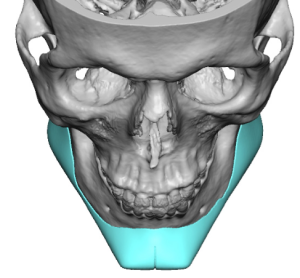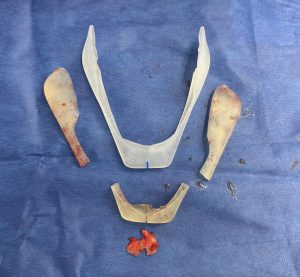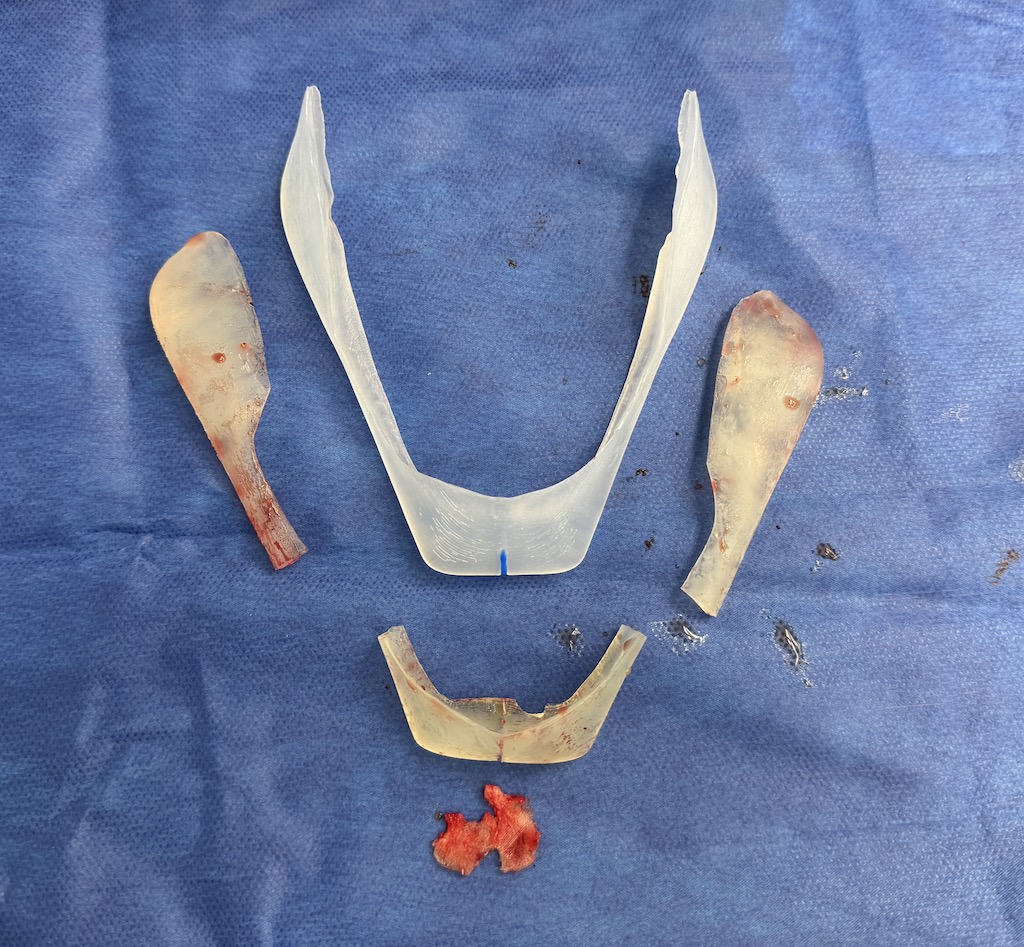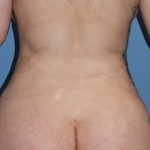
But despite these many benefits the custom jawline implant is not a perfect aesthetic procedure. While a custom implant design is uniquely made for each patient its exact effects can not be preoperatively predicted. Currently a custom jawline implant design is a best guess as to the desired external effect. While good improvement usually occurs the patient’s optimal result is not always obtained. And even when very good results are seen some patients still wish for additional augmentation or shape changes. (about a 40% occurence in my experience)
As a result a certain percentage of custom jawline implant patients may eventually request replacement with a new implant design. While this can certainly be done and it is not rare to do so there are several points about custom jawline implant replacements to know. First and foremost, the replacement surgery may be easier or harder than the initial surgery. This all depends on whether the replacement implant is bigger or smaller than the original one. Smaller implant sizes are easier while larger implant sizes (which almost always is what is done) will be harder. Due to the restrictions of the now present enveloping capsule and to avoid potential injury to the mental nerves it may be necessary to section the new implant into pieces for its placement. While the initial one may have gone in as a one piece implant the replacement may or may not.

When I see a patient for a custom jawline implant replacement I always point out that to have an initial large wraparound jaw implant that has gone on to satisfactorily heal without any complications should be considered a biologic miracle. I caution patients to not tempt fate as, just because the first one healed without complications, is no guarantee that replacement surgery will turn out so favorably. All of the same risks from the first surgery apply to the second implant surgery. While these cautionary statements are certainly true that deters very few patients from proceeding forward. Fortunately having done about as many custom implant replacement as the primary surgery, across the spectrum of different implant materials, the dreaded risk of infection has been seen to be very low.
Dr. Barry Eppley
World-Renowned Plastic Surgeon




